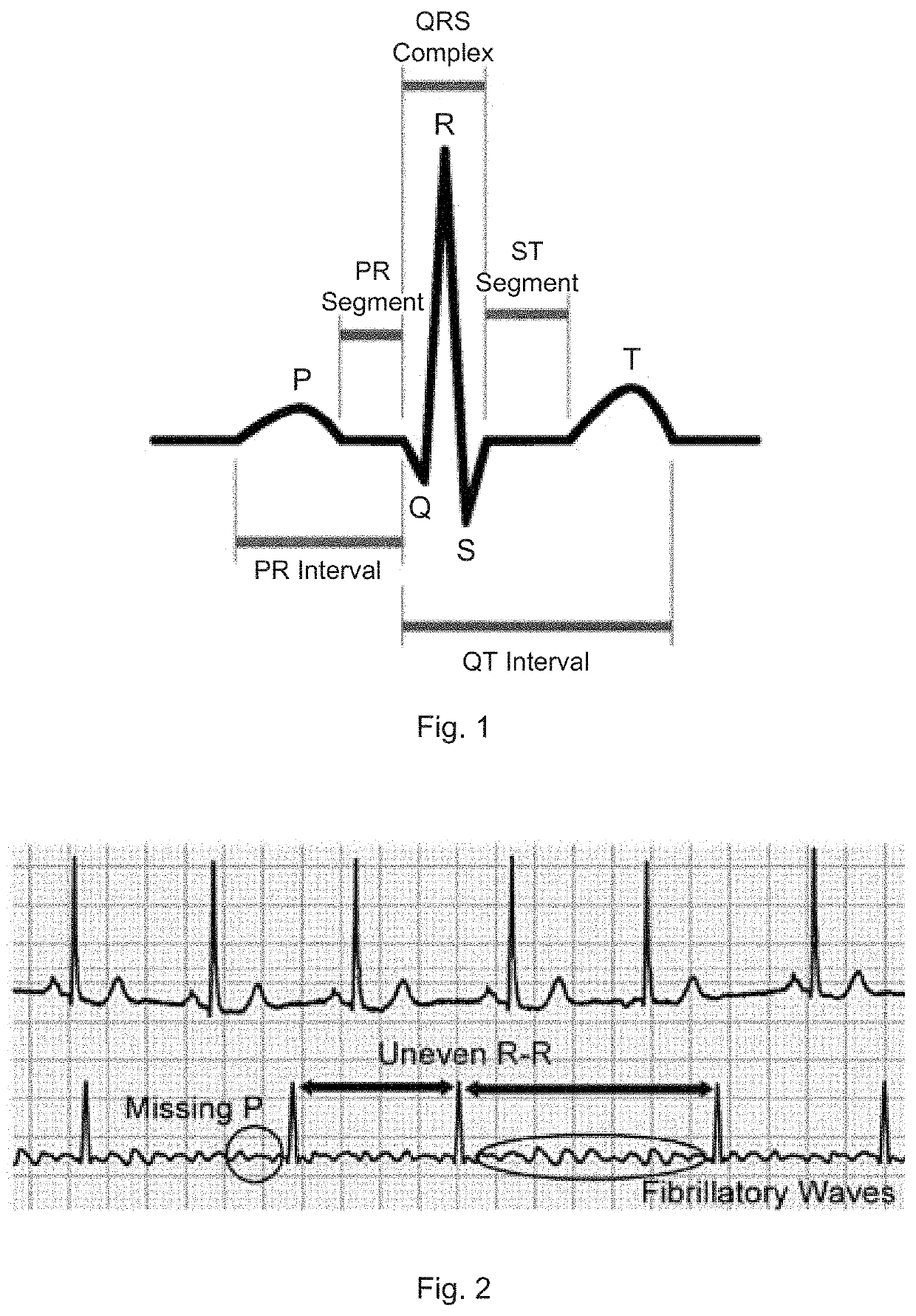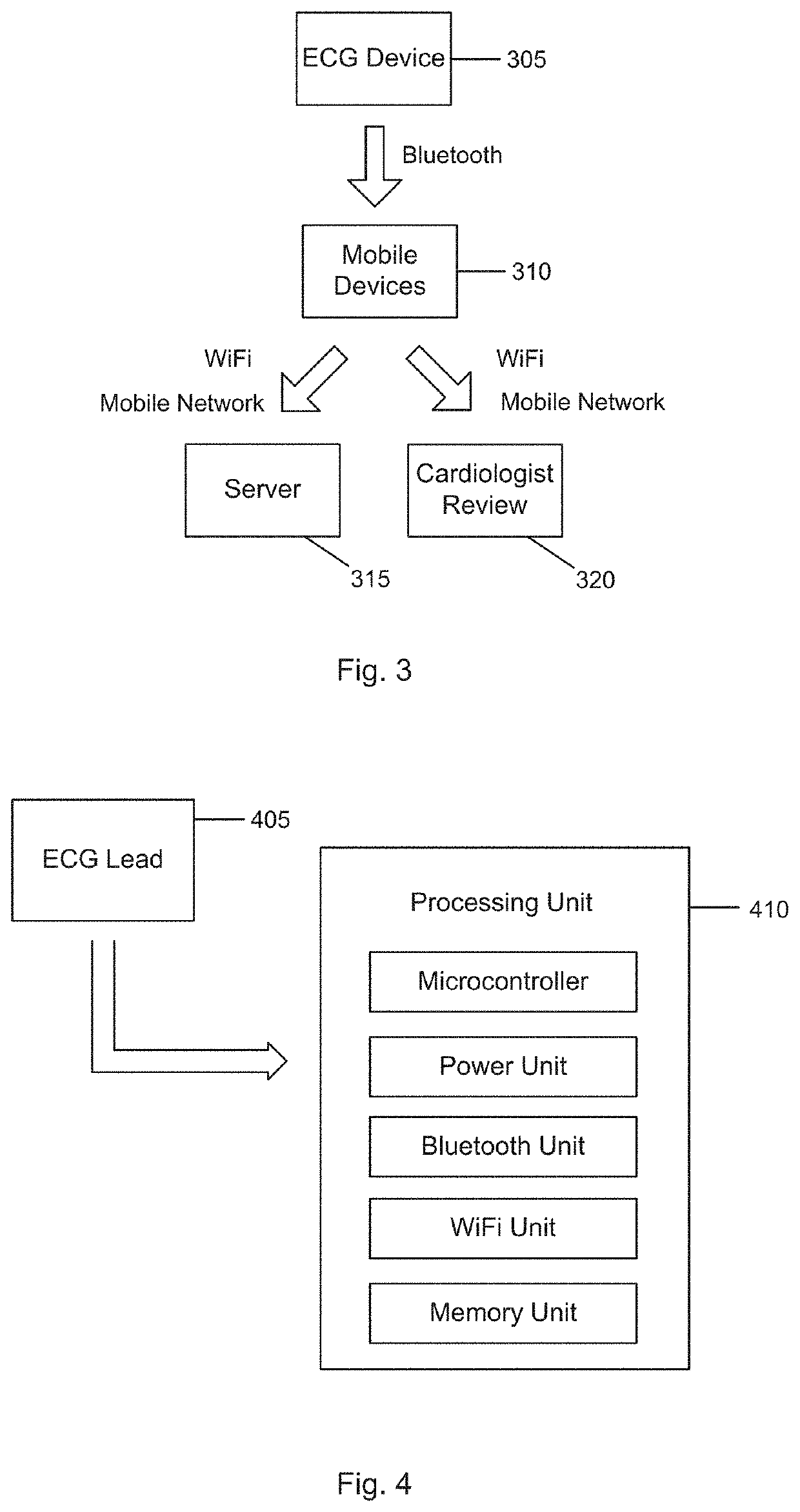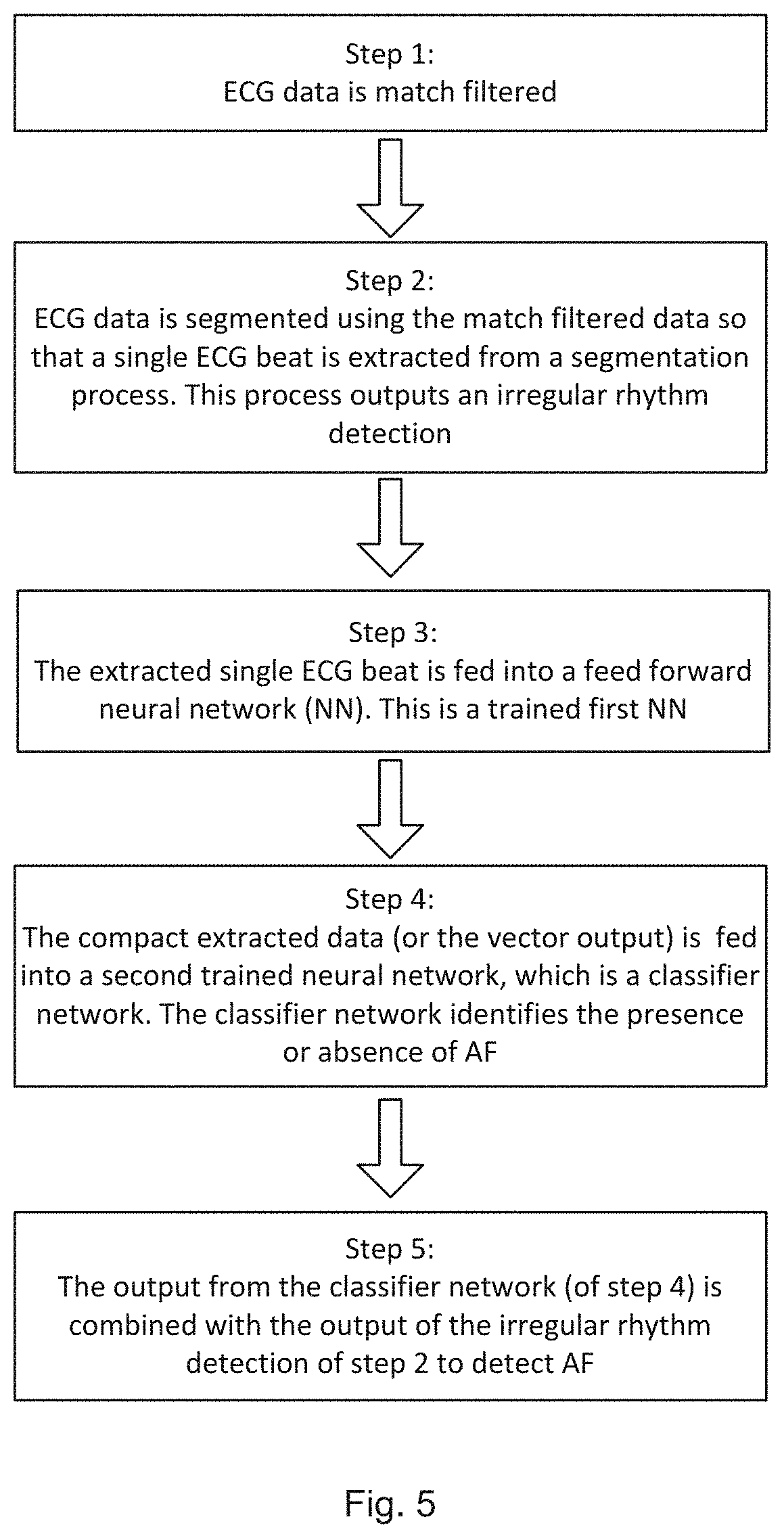Method of detecting abnormalities in ECG signals
a technology of electrocardiogram and abnormality detection, applied in the field of method and system for detecting abnormalities in electrocardiogram (ecg) signals, can solve the problems of increasing the risk of stroke in patients by 5 times, difficult to detect in short tests, and inability to detect episodes of af that may be “subclinical” during the paroxysmal stage. cost-effective and extensive deploymen
- Summary
- Abstract
- Description
- Claims
- Application Information
AI Technical Summary
Benefits of technology
Problems solved by technology
Method used
Image
Examples
Embodiment Construction
I. An Example of an Overall System Architecture
[0095]FIG. 3 illustrates an exemplary overall system architecture according to one embodiment of the present invention. In one example, a wearable ECG device 305 communicates, for example, by Bluetooth to a mobile device 310 (e.g. a mobile phone) carrying an application that buffers and uploads the data to a server 315 through mobile or Wi-Fi networks. This will ensure the wearable device is as lightweight as possible. The phone 310 may also perform some rudimentary analysis of the incoming signals to check for emergencies like cardiac arrest and directly send an alert to the cardiologist 320. Otherwise, the server 315 performs most of the analysis on the incoming data, and then highlights regions of interest for the cardiologist to inspect later, greatly reducing the workload on the cardiologist 320.
[0096]In one embodiment, the ECG device 305 includes a processing unit which is used to detect abnormalities with the ECG signal. For inst...
PUM
 Login to View More
Login to View More Abstract
Description
Claims
Application Information
 Login to View More
Login to View More - R&D
- Intellectual Property
- Life Sciences
- Materials
- Tech Scout
- Unparalleled Data Quality
- Higher Quality Content
- 60% Fewer Hallucinations
Browse by: Latest US Patents, China's latest patents, Technical Efficacy Thesaurus, Application Domain, Technology Topic, Popular Technical Reports.
© 2025 PatSnap. All rights reserved.Legal|Privacy policy|Modern Slavery Act Transparency Statement|Sitemap|About US| Contact US: help@patsnap.com



